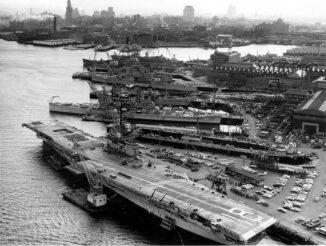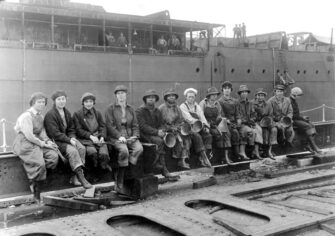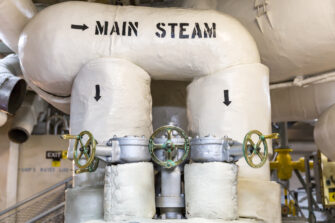Boston Navy Yard
You may be entitled to receive compensation. Mesothelioma and lung cancer victims & their families have been awarded over $1 million+ from easy access to funds. Call us today to apply.
Over the past 20 years, we've helped 1,000s of families claim the compensation they deserve with no upfront costs to them.

The Boston Navy Yard — also known as the Charlestown Navy Yard — served the United States Navy from 1800 until 1974, making it one of the oldest naval yards in the country.
Hundreds of ships were built and thousands were repaired at the Boston Navy Yard, including the famed USS Constitution (“Old Ironsides”). Thirty acres of the original yard have been converted into the Boston National Historic Park, a National Park Service site.
Until the late 1970s, asbestos materials were used extensively in shipbuilding and repair of Navy ships, resulting in many veterans and former Navy yard workers developing mesothelioma, lung cancer and asbestosis. Due to the long latency period of these diseases, those who worked at the Navy yard or served on ships decades ago continue to be diagnosed today.
Belluck Law is proud to serve those who served our country. We have represented Navy veterans and former Boston Navy Yard workers who have been diagnosed with an asbestos disease. Our experienced New York mesothelioma lawyers know which companies supplied asbestos products to the Navy and who should be held accountable for the harm caused.
We can help you seek full and fair compensation from asbestos companies, as well as file a claim for VA disability benefits. Based in New York, our law firm has earned a national reputation for helping asbestos victims get justice. Find out how we can help you and your family during a free case review.
Table of Contents
 For most of the 20th century, asbestos materials were used on Navy ships in hundreds of applications, such as insulation, gaskets, filters, packing material and plastics.
For most of the 20th century, asbestos materials were used on Navy ships in hundreds of applications, such as insulation, gaskets, filters, packing material and plastics.
Destroyer vessels built at the Boston Navy Yard had roughly 85,000 pounds of asbestos thermal insulation covering external surfaces of the ships’ steam propulsion systems, including on boilers, turbines, pipes, pumps and valves. Asbestos was also used as gasket material on connections within the steam propulsion system and as packing material in pumps.
Service members and civilian naval yard workers may have been exposed to asbestos while building, repairing or maintaining Navy ships.
Boilers
Boilers contained asbestos insulation in the form of firebrick or refractory cement on the inside and asbestos cement or thermal insulation on the outside. Asbestos gaskets were used on the boiler door, access windows and plates, connections to pipes and other equipment, and in boiler components such as soot blowers, valves and pumps.
Asbestos dust was created when workers installed, repaired and replaced asbestos boiler insulation. Gaskets and packing had to be inspected and changed regularly. When gaskets and packing were cut, hammered, scraped, brushed or abraded, they generated breathable asbestos fibers.
Belluck Law won a $32 million verdict for a Navy boiler tender exposed to asbestos. Learn more.
Turbines
Navy ship turbines had asbestos insulation on the interior and exterior. In addition, turbines were connected to pumps and valves containing asbestos gaskets and packing. Workers were exposed to asbestos while repairing, replacing and maintaining turbines.
Pumps
 Navy ships had hundreds of pumps used for different purposes. Pumps in a ship’s steam propulsion system moved liquids and condensed steam. Most of these pumps contained internal gaskets and packing made from asbestos.
Navy ships had hundreds of pumps used for different purposes. Pumps in a ship’s steam propulsion system moved liquids and condensed steam. Most of these pumps contained internal gaskets and packing made from asbestos.
As part of routine pump maintenance, workers changed gaskets and packing. To access internal pump components, repairmen first removed the outer layer of insulation, which generated large amounts of asbestos dust. Asbestos dust was also produced when the flange gaskets connecting pumps and valves to other components were removed, and when packing and gaskets inside the pump were removed and replaced.
Valves
The steam propulsion system in a Navy ship had hundreds of valves that controlled the flow of steam through the system. Asbestos packing materials inside valves created a seal and protected against leakage of high-pressure steam or liquids. Asbestos gaskets were also used inside valves to seal joints between metal surfaces. Removing and replacing asbestos gaskets and packing in valves generated breathable and ingestible asbestos dust.
Belluck Law recently won a $3.2 million verdict for a Navy machinist mate exposed to asbestos in valves. Learn more.
Asbestos on Navy ships could also be found in:
- Condensers, evaporators and distillation equipment
- Insulation
- Brake and clutch linings on a ship’s anchor windlass, capstan and weight handling equipment (e.g. hoists, cranes, conveyors, elevators, winches, chainfalls and come-a-longs)
- Steam traps
- Air-conditioning access plate covers
- Electrical wiring
Asbestos exposure was widespread at naval yards during ship construction, ship repair and ship overhaul. Numerous studies have shown that shipyard workers were exposed to high levels of airborne asbestos and, as a result, have a serious risk of developing mesothelioma, lung cancer and asbestosis.
Shipyard trades associated with asbestos exposure include machinists, electricians, pipefitters, riggers, shipfitters, welders, boiler makers, heavy equipment mechanics, pipe coverers/insulators, carpenters, plumbers and laborers. Because asbestos fibers did not respect craft lines, workers who did not directly handle asbestos materials were exposed to dust when asbestos work was performed in their vicinity.
There is no safe level of asbestos exposure. Exposure to asbestos is the only known cause of mesothelioma.
Many Navy veterans served their country honorably, only to find out years later that they have the devastating asbestos cancer mesothelioma. Although veterans make up less than 10 percent of the U.S. population, they represent nearly one-third of the country’s mesothelioma victims.
But it is not too late for veterans to seek compensation for their illness. Claims against the companies that sold asbestos to the Navy can provide money for treatment and other disease-related costs.
If you file a mesothelioma lawsuit, you will not be suing the Navy. The asbestos companies in New York alone bear responsibility for your exposure and resulting illness. You may, however, be eligible for VA disability benefits, including monthly compensation and health care.
Belluck Law has recovered millions of dollars for veterans with mesothelioma. We can help you determine how your asbestos exposure occurred and which companies are to blame. Our team also includes a VA-certified mesothelioma lawyers to help with disability claims. Schedule a free case review now.
Sources:
- International Forum for Respiratory Research: Government and Navy knowledge regarding health hazards of asbestos: A state of the science evaluation (1900 to 1970)
- National Park Service: Charlestown Navy Yard
- Destroyer History Foundation: Boston Navy Yard
- Friends of the Charlestown Navy Yard: Navy Yard History
- Occupational & Environmental Medicine: Shipyard workers and asbestos: a persistent and international problem
- American Association for Cancer Research: Cancer Occurrence in Shipyard Workers Exposed to Asbestos in Hawaii
